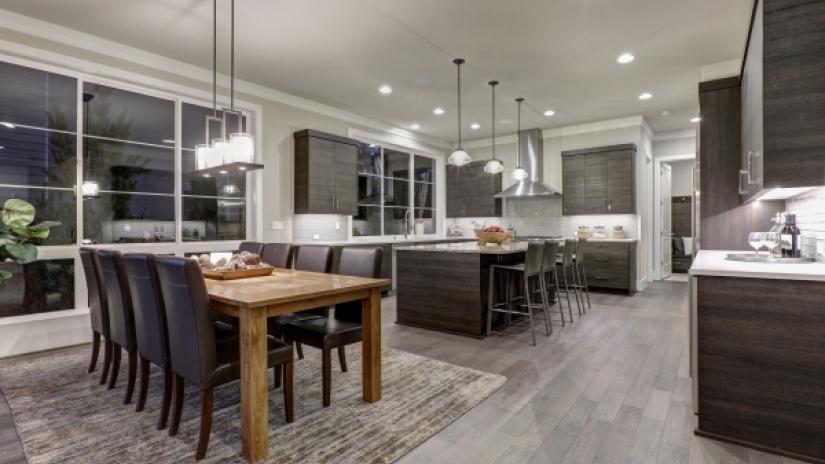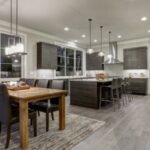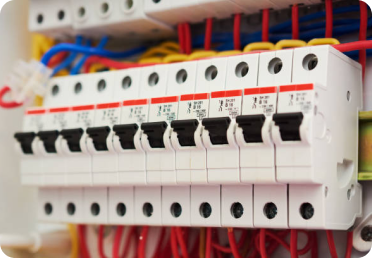
Using Full-spectrum Lighting to Brighten Your Life at Home
Interior lighting is an essential component of home design. In addition to providing visibility, the interior lighting in a room can have a major impact on the atmosphere of the space and the overall cohesiveness of your interior design scheme.
Optimal interior lighting can make your home a more enjoyable place to live and work, enabling you to better manage stress from other areas of life. However, it’s important to remember that not all light sources are created equal. Different types of light can be used to create different effects and compliment varying styles of decor.
Choosing the right type of lighting can benefit your health, enhance the appearance of your home, and create a more comfortable living space for you and your family. If you’re looking for a new interior light source that will support positive moods and provide adequate clarity, there are several compelling reasons to consider full-spectrum lighting.
What Is Full-spectrum Lighting?
The term “full-spectrum” was first used in the 1960s to describe electric light sources that simulate both the visible and ultraviolet (UV) spectrum of natural light. There is no official technical definition for “full-spectrum” lightbulbs, although the term is often applied to electric light sources that emulate the qualities of natural light.
Because of the ambiguity around the meaning of the term, companies can advertise many different products as “full-spectrum” light sources without fulfilling any technical requirements. As a result, some products labeled as “full-spectrum” may be more similar to other types of lighting.
Full-spectrum vs. Other Types of Lighting
While there is no reliable way to identify full-spectrum light with the naked eye, it has a distinct spectral distribution that makes it unique from other types of lighting. Similar to the sun, full-spectrum lighting products emit light that is evenly distributed across the visual spectrum, from red to violet. This means that the same amount of light is produced in each color wavelength. This balance of colors helps create the crispness and clarity that full-spectrum bulbs are known for.
Other light sources produce far more uneven distributions, which can vary depending on the bulb type. For example, typical incandescent bulbs emit more intense energy in red wavelengths than in blue and green, while cool LEDs produce light in mostly blue wavelengths. Although it may appear similar to the naked eye, full-spectrum lighting provides several advantages not offered by more traditional light sources.
Benefits of Full-Spectrum Lighting
Full-spectrum lighting can improve visual clarity and enhance the atmosphere of your home, but it can help also promote wellness. There are several key aesthetic and health benefits associated with full-spectrum light:
- Enhanced color rendering: One of the most notable advantages of full-spectrum lighting is its natural ability to show a wider range of colors. The color characteristics of a light source are typically measured in terms of CRI (Color Rendering Index), which can be a maximum of 100. True full-spectrum light sources have a CRI of at least 90, while other common light sources, such as cool white fluorescent lamps, generally have CRI values of about 60 or 70.
The superior rendering provided by full-spectrum light sources can improve color perception, enabling you to discern the visual characteristics of different objects more easily. This makes full-spectrum lighting ideal for art, graphic design, and photo/video editing. - Reduced energy use: Because it offers naturally better color rendering, full-spectrum light can provide the same level of visibility with less energy than traditional light sources. This can help you reduce your carbon footprint and save on your electric bill without downgrading the quality of lighting in your home.
- Improved mood: In addition to being practical and aesthetically pleasing, the bright light produced by full-spectrum sources can also have positive effects on the brain. Full-spectrum lighting is commonly used in bright light therapy, which has been proven effective in the treatment of seasonal affective disorder. Data also shows that bright light therapy may be able to help reduce the severity of bipolar depression and lower the risk of manic switches compared to antidepressants.
- Better sleep: As part of a morning routine, bright light therapy can stabilize circadian rhythms, leading to a reduction in daytime sleepiness. Because of this effect, utilizing full-spectrum lighting in your home office can help you improve productivity and focus.
When analyzing these benefits, it’s important to remember that the way you use full-spectrum lighting within your home can determine its efficacy. Implementing full-spectrum lighting in the right way will help ensure maximum return on your investment.
Implementing Full-spectrum Lighting in Your Home
The optimal way to implement full-spectrum lighting can vary depending on your visibility requirements, the size of your home, and your desired interior aesthetic. There are a variety of full-spectrum lighting products available to consumers, each with its pros and cons. Researching your options and talking with an electrical services provider can help you decide which full-spectrum lighting products to use and how to best use them.
Full-spectrum Light Bulbs
As their name suggests, full-spectrum light bulbs are designed to simulate the qualities of natural daylight. Full-spectrum bulbs are available in a range of styles and sizes, allowing you to choose the best light bulb for each area of your home. There are a variety of ways to introduce full-spectrum light bulbs in your home, such as installing new light fixtures or simply replacing your older lightbulbs with compatible full-spectrum alternatives. Because full-spectrum bulbs are installed and stored the same way as other light bulbs, making the switch is a relatively easy and simple way to implement full-spectrum lighting in your home.
Full-spectrum Lamps
Full-spectrum lamps are an inexpensive and easy way to enjoy the benefits of full-spectrum lighting. They are extremely versatile, don’t require installation, and can be easily moved around your home to fit your needs. This makes them an optimal solution for many home design challenges, such as lighting windowless rooms — most commonly bathrooms. Full-spectrum lamps come in a range of designs; from floor lamps that will illuminate entire rooms to smaller table lamps that provide accent lighting for your home.
Full-spectrum Light Filters
Filters are perhaps the quickest way to implement full-spectrum light in your home. Full-spectrum filters can be placed over traditional fluorescent or LED light bulbs, eliminating the need for bulb replacement or new fixtures. These filters are designed to imitate all the colors of the visible spectrum as light passes through them, which helps create the balanced white color associated with full-spectrum light.
With the variety of full-spectrum products available, it has never been easier to enjoy the diverse benefits of full-spectrum lighting in your home. Switching to full-spectrum lighting can reduce your energy cost, improve your mood, and allow you to create the perfect atmosphere for your living space. When you’re ready to upgrade or change your existing lighting, your local lighting experts at Mr. Electric are ready to help. Give us a call at 844-866-1367 or schedule an appointment online today!
Recent Posts
February 21, 2023
Installing Of Electrical Disconnect SwitchesFebruary 21, 2023
Solar Rebates in WA: All you need to know in 2023






